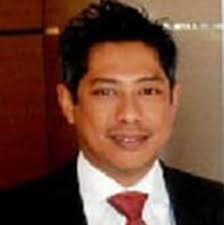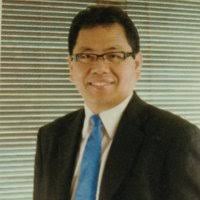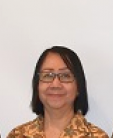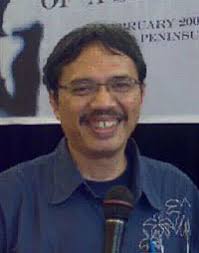Case Document
J.CO., IT’S NOT ONLY A DONUT
This case study illustrated how J.Co preparation to obtain consumer enthusiasm. The process of product preparation begins with comprehensive research of customer and development of the value concept from J.Co. Johnny, as the owner had a great vision and a keen intuition in seeing the market opportunity.
In the case study, we can learn about how the company formulates the value proposition offering to the market. This discussion can be analyzed through a hierarchy of values, also the product hierarchy. Further, we can learn how J.Co builds differentiation of products and services. After that, we will learn how J.Co delivers its offering toward store ambience and creating customer experience during consumption process.
ANGKASA PURA I: PARTNERSHIP PROGRAM AND ENVIRONMENT PROGRAM
This case study describes the implementation of CSR Programs since 2003 under Angkasa Pura 1, which were evaluated in 2007. Angkasa Pura is a state-owned enterprise (SOE) that manages public services and acts as an arm of the government in improving social welfare.
In this case, participants can learn how companies perform CSR program in two forms: the Partnership Program and the Environment Program. The Partnership Program is done by providing soft loans to small entrepreneurs as their capital and additional capital for their business development. This program has a great demand among small businesses because the procedure that is used is relatively easier compared to the process of borrowing money from banks. This activity can be categorized as corporate philanthropy.
Activities in the Environment Program provide assistance to communities in improving facilities for daily life. Some examples of activities that have been accomplished are the construction of roads, mosques (Muslim prayer houses), and public bathing facilities. These can be categorized as corporate social marketing.
RAISING CAPITAL – PT. KRAKATAU STEEL (PERSERO) ISSUES IN FUNDING THEIR CAPITAL EXPANSION REQUIREMENTS
The Krakatau Steel’s (Persero) management confronted a difficult task in obtaining new capital injection to increase the production target from its current capacity 2,5 MT to 5 MT by year 2013.
The options faced by management are whether KS issues new shares through Strategic Sale (SS) or Initial Public Offering (IPO) mechanism. In this case, both alternatives had their pros and cons. The strategic partner for Strategic Sale mechanism is offered aggressively by ArcelorMittal, foreign steel company, Luxemburg and Indian joint steel company.
The controversy strategic sale issue came to an end in 18 September 2008 when the Indonesia’s Legislator Body or DPR ruled out any strategic sale of KS ownership to foreign parties and that KS’s equity requirements for the planned expansion and enhancement of their facilities would be conducted through an Initial Public Offering (IPO) process.
The IPO of KS confronts a reality of market crash near the end of 2008. While time was an essence as the development project was expected to take 2-3 years, optimizing shareholder’s value by selecting the best choice of source of fund given the current markets was also important. Eventually, proposal from ArcelorMittal for Strategic Sale remains on the table.
IPO (INITIAL PUBLIC OFFERING) PT ELNUSA
There are several reasons why PT. Elnusa launched its IPO. The main reason seems to be the fact that Elnusa wants to expand its business into marine seismic acquisition, deep well drilling, and testing barge which requires huge capital expenditures especially in equipment procurement. The story reveals the pros and cons arguments around the IPO decision. One could argue, why has to be the IPO and not bond issuance? What is the advantages and disadvantages of IPO and why it is preferable compared to bond issuance. How will the IPO revenue be allocated among the main activities asking for financial support and what is the allocation basis. One main pre-requisite for Elnusa IPO decision is its historic financial performance as shown by the financial statements as well as measured by liquidity, solvability and profitability ratios. It is also worth to be noted that before the IPO, Elnusa merged three of its subsidiaries and consolidated several subsidiaries in order to create Elnusa as the “operational holding” rather than the “strategic holding” . The decision for IPO by Elnusa cannot be separated from the industry environment and prospect where Elnusa is operating. SWOT analysis is used to identify and assess both internal and external factors influencing company present and future performance. The case study concludes that IPO decision has been successful in strengthening Elnusa capital structure to support the revenue-generating activities of core business.
ALTERNATIVE FINANCING OF PT BUMI RESOURCES, TBK.
PT Bumi Resources TbK was the biggest coal producer in Indonesia and the biggest exporter coal thermal in the world (8% market share). The company has engaged to increase coal production capacity for the next 5 years and has obliged to refinance its financial liabilities during its dynamic investor relationship events on 2003-2007.
This case illustrates the company’s financing strategic using financing alternative like issuing bonds, stock price offering and banking loan.
EXCHANGE TRADED FUND (ETF)- BASED MUTUAL FUND: CASE STUDY OF ASIAN BOND FUND (ABF) MANAGED BY PT BAHANA TCW INVESTMENT MANAGEMENT
Tuesday, December 18th, 2007, marked the new era in the history of Indonesian capital market due to the introduction of a brand new mutual fund in Indonesia called Exchange Traded Fund (ETF). The Fund, known as the Asian Bond Fund ETF - Indonesia Bond Index Fund Bahana TCW (R-ABFII) is sold at the launching date at Rp 13,003 per unit. The benchmark for R-ABFII is the State of Indonesia Bond (SUN) Index published in the form of iBoxx ABF Index, which is managed by an international independent institution based in Frankfurt - Germany: International Index Company (IIC). The Fund is considered to be a very unique and attractive alternative for investment with the credibility as high as the sovereign rating of Indonesia. By investing in the Fund, investors easily get diversified government portfolio. Furthermore, ETF is much more competitive compared to conventional fund, because investor will be charged less brokerage fee. In addition, ETF is the only product which reflects the efficiency level of government bond market in Indonesia. The Fund could be seen be seen as the investment grade equivalent with the sovereign rate of Indonesia. Accordingly, there is a remote possibility that the Fund will be default.”
The case study discusses how a non-traditional Fund compete with the traditional ones during which time local investors prefer to maintain their risk-averse approach in their investment pattern. When originally introduced, regulatory agencies such as Indonesian Stock Exchange (BEI), Bank Indonesia and Bapepam LK are very confident that the product will boost the market because the international support given by the Executives Meeting of East Asia and Pacific Central Banks, or EMEAP. EMAP consists of 11 (eleven) central bank and monetary authority: the Bank of Japan, Bank of China, Bank of Korea, The Reserve Bank of Australia, The Reserve Bank of New Zealand, Hong Kong Monetary Authority, Monetary Authority of Indonesia, Bank of Thailand, Bangko Sentral ng Pilipinas, State Bank of Malaysia, and Bank Indonesia. Whether the support shown by the official regulatory agencies, will in fact, boost the total investment in the product is still uncertain.
Bahana TCW Investment Management is really in a dillematic position when decided to manage the unique fund given a variety of profitable product being offered by the market.
PT GREAT RIVER INTERNATIONAL TBK (GRIV): THE GREAT INDONESIAN CORPORATE COLLAPSE?
This case provided students an open forum to discuss and analyze the factors and reasons why senior management at a major corporation and a public accountant firm gave false or manipulated financial statements. The case gave an interesting human interest aspect to be considered and values, belief and integrity that leaders and public auditors must have.
The real story asked and provoked students to investigate and questions what were the motives and attitudes that professionals and leaders had around this publicly listed company. The case could be used as a debate forum to find out what are the factors and reasons that lead to the collapse of this corporation or more specifically was there an accounting and/or financial “fraud” involved in the case? What were the causes of this major catastrophic corporate collapse? The failures usually arise from the cumulative effects of many small failures, any of one of which, if detected in time, could have been prevented. Were the many small failures of this corporation being ignored or swept under the “blankets”? Is it correct to judge that in this case, there was a failure of leadership, culture, internal controls, internal audits, and corporate governance? Was the board of directors lying? What types of controls or safeguards that a public listed company or a regulator like Indonesian Capital Market Supervisory Agency (Bapepam: Badan Pengawas Pasar Modal) must have to prevent similar case(s) to happen again?
In our class discussion, many say that the fraud was due solely to bad individuals who have decided to cheat the public and the top management was so brave to issue bonds (to raise public fund) in hind sight of the performance of the corporation. Another proposition could be that the culprit was the economic crisis that happened to this country. Or was it “mis-managed” or it was all about the “greed” or “conspicuous” character of the leaders/professionals.
While many of us think that senior executives always act ethically, legally, and honorably, and market economies must be able to function even when personal greed and ambition motivate executive to step across legal and ethical lines. Greed and ambition are not new phenomena in this country. Is it being too idealist to believe that all senior executives will act to a sainthood or godliness standard? Public corporations and regulators need control mechanisms /laws/regulations that ideally dissuade executives from acting down to their animal instincts, and can also detect as well as prevent rapidly when actual illegal behavior/activities were initiated. If there is no economic crisis in Indonesia, may GRIV still have existed and grown well? If proper and strict organizational and government control systems were in place and also their vital roles and functions were installed, could this not happen?
DOING GOOD AND DOING WELL: THE CASE OF LIFEBUOY BERBAGI SEHAT
“Doing good and doing well; the case of Lifebuoy Berbagi Sehat” (it will henceforth be referred to as :“LBS”) describes how Lifebuoy, a market leader brand of toilet soap in Indonesia maintains its leadership in a mature market by embedding CSR as part of the brand identity. This case depicts the thorough analysis and the strategy Lifebuoy developed and implemented as well the results, with CSR in Unilever Indonesia as the backdrop.
Issues which can be brought up from the LBS case for class discussion would evolve around the step-by-step strategy developed by Lifebuoy, the results at one point in time, and the challenges ahead. Ultimately, the discussion needs to be converged into the concept of CSR.
ABN AMRO SOFTWARE DELIVERY MANAGEMENT
ABN AMRO, the oldest foreign bank in Indonesia, had a reason to have an internal IT Delivery Management. While still maintaining its role on the banking industry, the bank could avoid depending too far on some external suppliers when it came to satisfying its information technology requirements. The IT Delivery Management project manager therefore acted as a middleman that balanced between the due-date pressures that the bank defined as an acceptable scope, and the capability of the technically knowledgeable vendors to understand what the specifications actually required.
BUILT TO SERVE: THE ART OF STRATEGIC SERVICES OF AN INDONESIAN AD AGENCY DWI SAPTA
Entering the third millennium the landscape of advertising industry was changing rapidly. Consumer fragmentation and media proliferation inline with the development of information technology had been changed the meaning of advertising. Consumers were changed, and it was not an easy job to persuade them to buy only with the help of advertising. The traditional 15 percent media commission was gone when the multinationals media specialist only ask for one to four percent. The multinationals ad agencies, labeled as Brand or Creative Agency, now working for their clients based on retainer or project fee. This condition was brought many difficulties to Indonesia ad agencies that operating as a full services agency with the 15 percent media commission model. As one of the Indonesian ad agency, Dwi Sapta must smartly developing and delivery its services to keep their clients happy with them.
Dwi Sapta Integrated Marketing Communications was started with a photography studio in 1981. From the beginning, the founder Aloysius Adji Watono showed his responsibility for the products he delivered. He chooses Porter’s low cost focus strategy that means Dwi Sapta must deliver services with a competitive price bracket, and focus on a specific group of customers. Dwi Sapta will only produce advertising that will bring success to the client’s products. So the ads will always start from the marketing objective of the clients and the consumer insight about the products.
Dwi Sapta was growing with its local clients that much smaller compare to big budget clients like Unilever, Toyota, or Nestle. They had believed in Dwi Sapta because they were too hesitant to go to the big agencies. Psychologically, they had feel convenience to deal with small agency that will charge them lower compare to the big guys. They also think that small agency will give them more attention, understanding, and the most important one, have the same level of aspiration.
The 1998 reform brought the multinationals ad agencies to the surface and they took off their local name. In 1997, just days before the crisis erupted, Chairman of WPP Martin Sorrel bought AdForce/JWT and solely changed it to JWT Indonesia. Then almost all of the big guys from Madison Avenue were boldly present in the country.
The reform also changed the consumer and media in Indonesia. Consumer has more freedom to follow their specific lifestyle. For instance, the tattoo or piercing that before was ethically forbidden now a lifestyle among many people, male or female.
To accommodate the variations of consumer needs and demands, new products and services keep coming. The same pattern was happened with media that will happy to serve a specific audience with specific products or services. With no obligation to have publishing permit, the proliferation of print media flourishes and gave more option for consumer to choose. Editorial content now open to all aspects, from news, lifestyle, sports, business, sex, to religion. Broadcast media also proliferated, with national TV station growth to 11 channels, and more than hundred local TVs. The same pattern also happens to radio.
Within this dynamic market, Dwi Sapta must strategically choose its direction to win the competition. The question is what kind of marketing strategy they must choose to win the battle?









